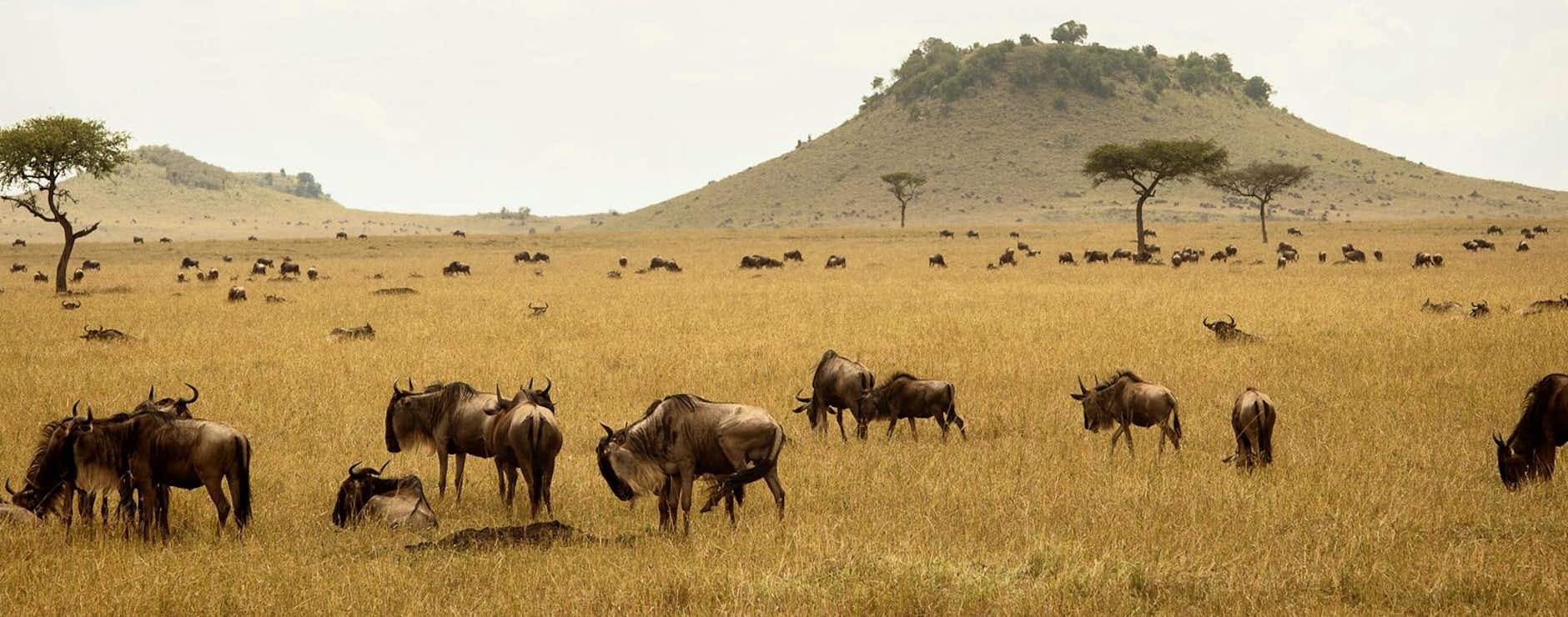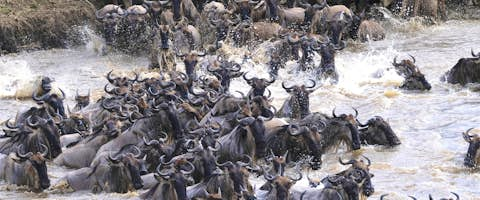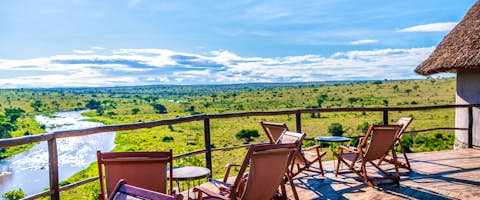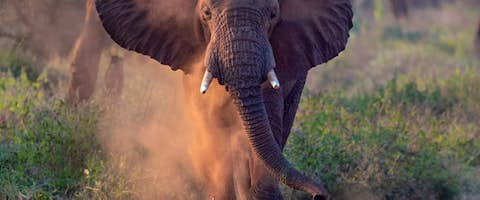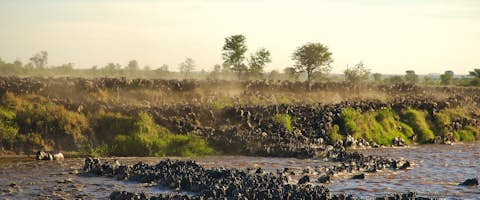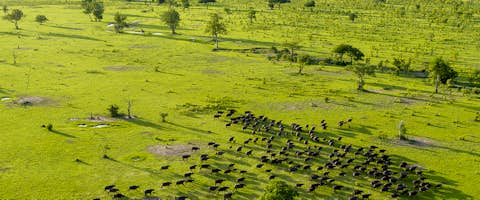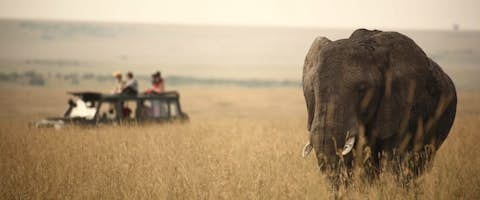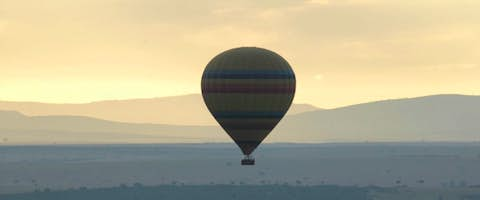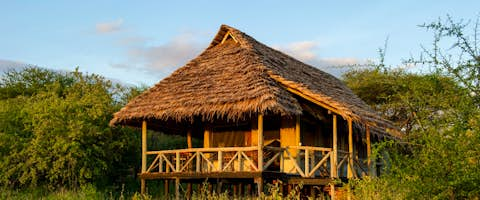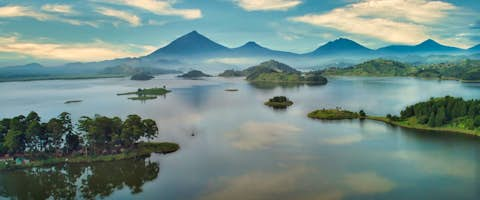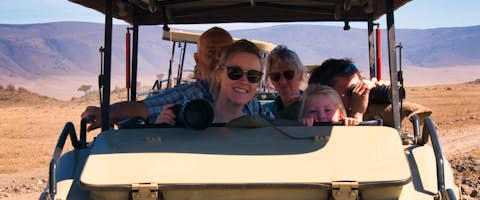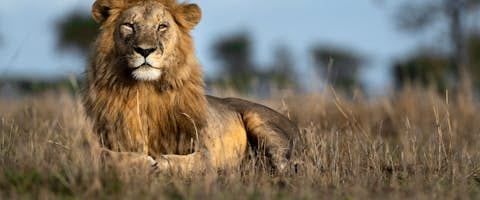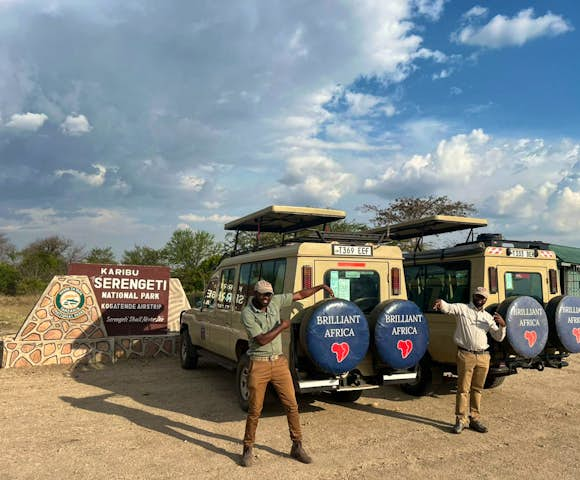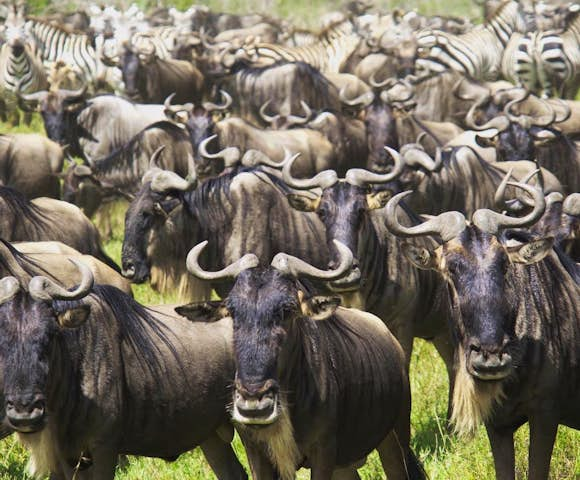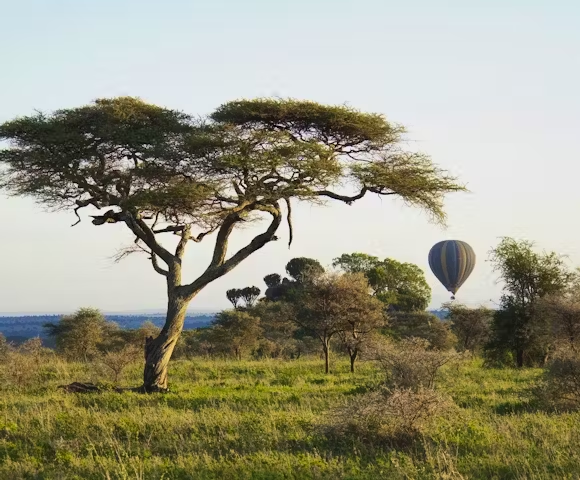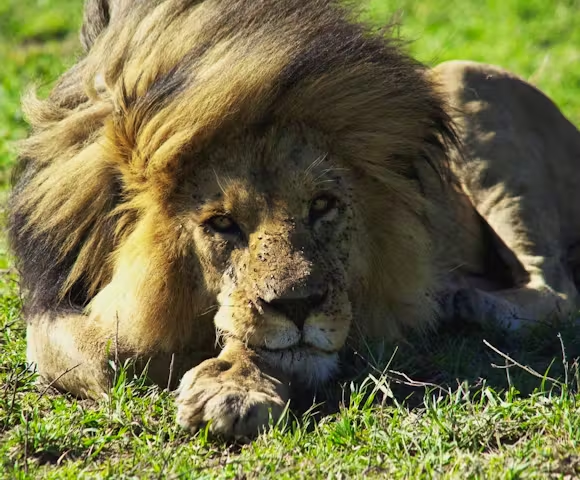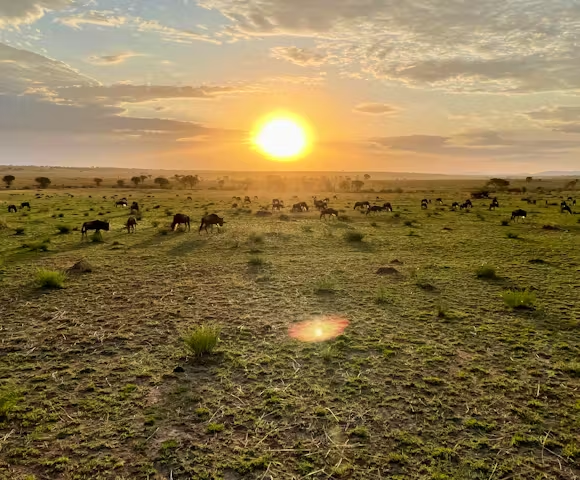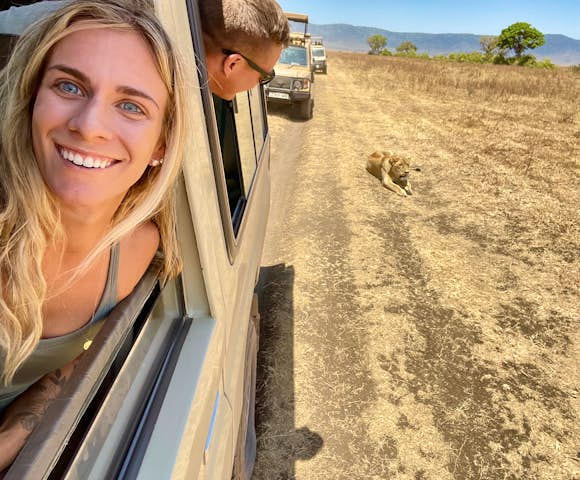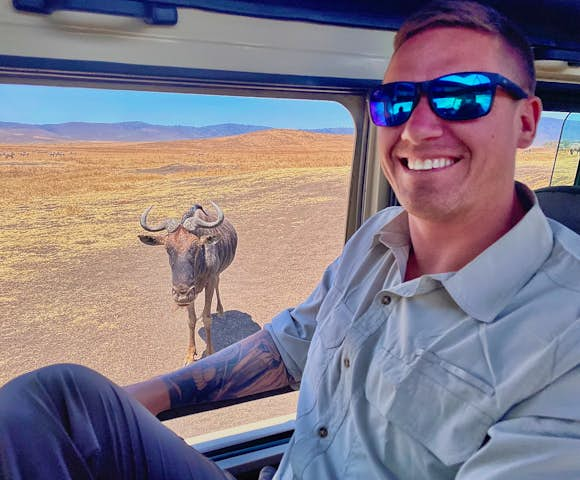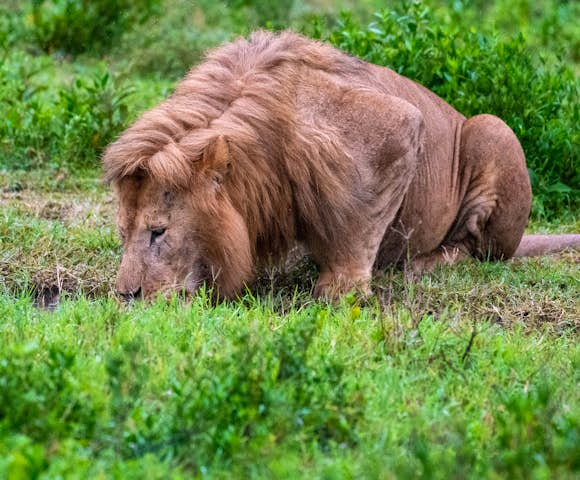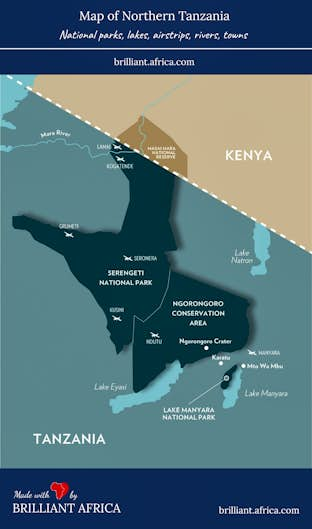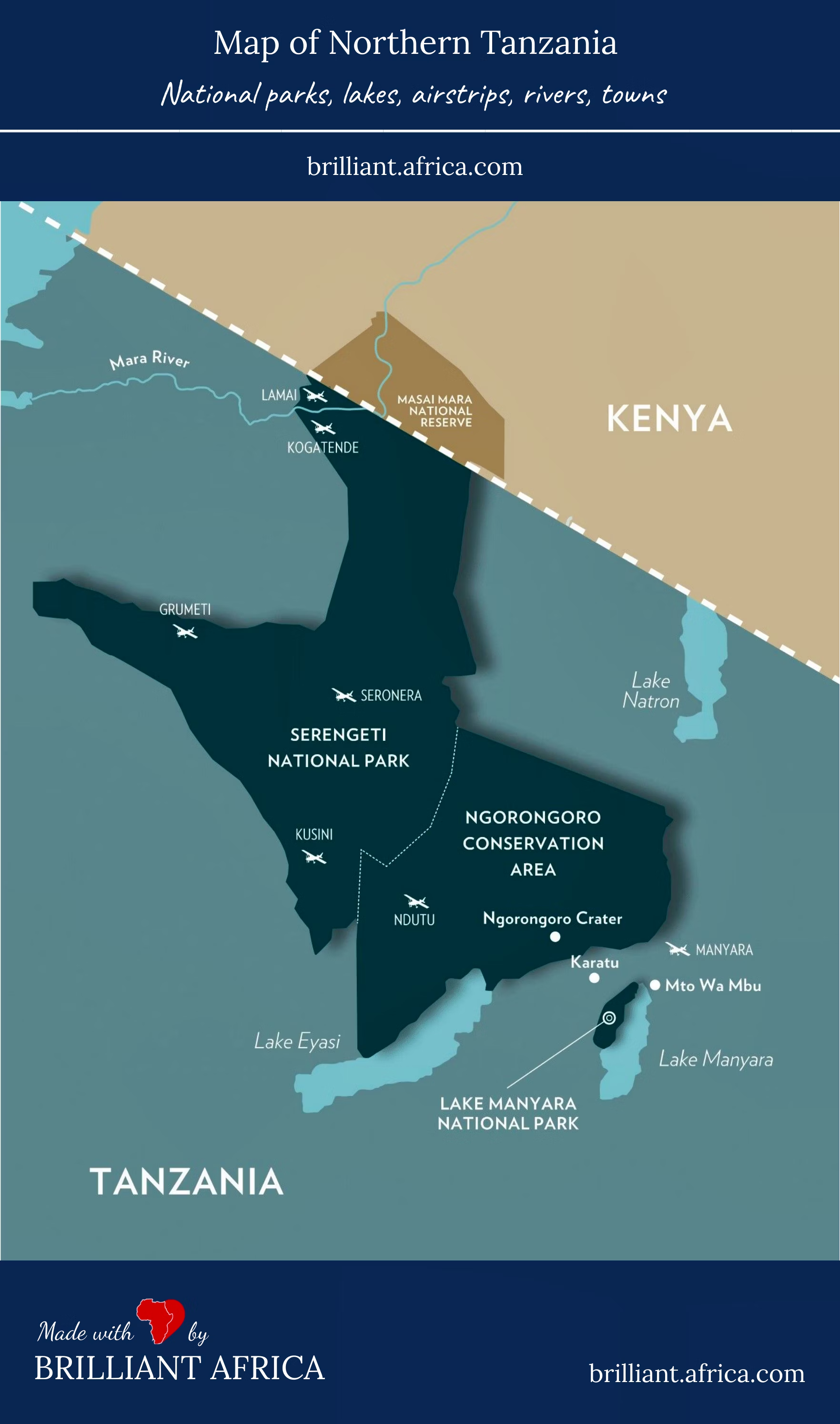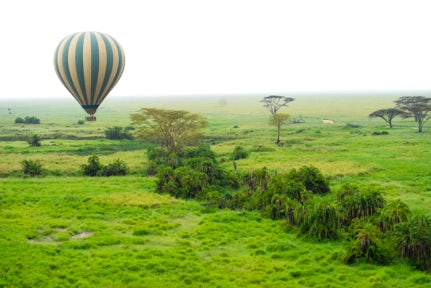The Serengeti, at a glance
One of the most famous destinations in Africa, this UNESCO world heritage park is the stage for the dramatic wildebeest migration that takes place each year.
Tanzania’s oldest park, covering a whopping 1.5 million hectares, it is home to an incredible diversity of animals.
The park borders Kenya in the northwest, and is connected to the Ngorongoro Conservation area.
The Serengeti is one of the best places for safari in Africa thanks to the huge numbers of big game that reside here.
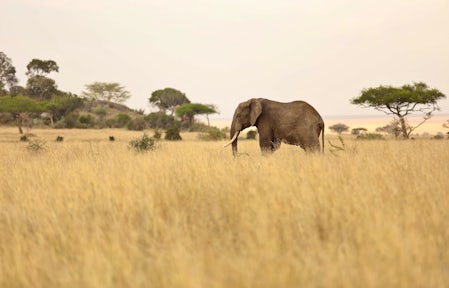
Trips to the Serengeti
The tours below showcase just some of what is possible. Use these itineraries as starting points, or to draw inspiration. Then get in touch, and let our expert team help craft the perfect itinerary for you.
Photos from our customers
Where will your adventure take you?
Guide to the Serengeti
Wildlife in the Serengeti
The rich grasslands of the Serengeti allow it to support the millions of wildebeest that live here, before the dry season forces them north towards the Mara in southern Kenya.
Woodlands and acacia trees dot the landscape, as do ‘koppies’, large granite outcrops rising up from the plains.
As well as the famous wildebeest migration, the park is home to the Big Five: rhino, lions, leopards buffalo, and elephant.
The Serengeti is home to some of the world's fiercest predators: cheetah, spotted hyena (usually in the morning), jackal, bat-eared-fox, and wild dog. The park has the highest concentration of predators in Africa.
Alongside these you'll find giraffes, mongoose, baboons, aardvarks, colobus monkeys, monitor lizards, and giant Nile crocodiles.
The park also has the highest ostrich population in Africa, and more than 350 species of birds.
There are at least four endangered animal species; the black rhino, elephant, wild dog, and cheetah.
During the dry season, when the short grasses and reduced watering holes make wildlife sightings much easier, it's not uncommon to return from a safari in a state of silent disbelief. The abundance of wildlife, the beauty of the park, the sheer scale of it all.

The Wildebeest Migration
The annual wildebeest migration takes place from late January through to September each year.
This incredible natural phenomenon sees over two million wildebeest, as well as herds of zebra and gazelle, migrate through the Serengeti, cross the Grumeti and Mara river before arriving at the Maasai Mara in Kenya.
It is at the Grumeti and Mara river that some of the most famous shots of the wildebeest migration have been taken. Here, the animals are not only faced with the possibility of being swept away by the fierce water, but from attacks under the water from crocodiles, and above on the plains as they wait to cross, by lions and leopards.
It is a perilous journey, and one of nature’s most incredible migratory events.
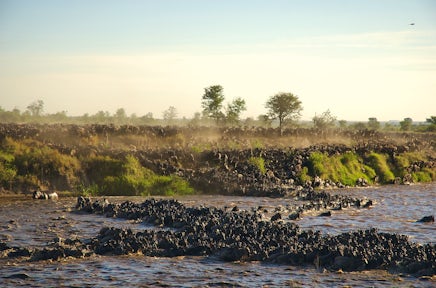

Brilliant says
It's not uncommon to return from a safari in a state of silent disbelief. The abundance of wildlife, the beauty of the park, the sheer scale of it all.
Searching for greener pastures
The migration occurs out of necessity. The animals must make this long, treacherous and circuitous route in search of food. In the short rain season (October to December), the animals can graze in the southern Serengeti, but as the water levels run low by April, they are forced to find more pastureland, or risk starvation.
For two million animals, this becomes a race against hunger and thirst. Herds of wildebeest, zebra and gazelle cover the plains and stretch out across the horizon, moving towards the Grumeti River in the west, and then to the Mara River in the north via the Seronera bypass.
They then stay in the Masai Mara National Reserve for three to four months, until the rains resume in October, and they can return to the Eastern Lobo Serengeti.
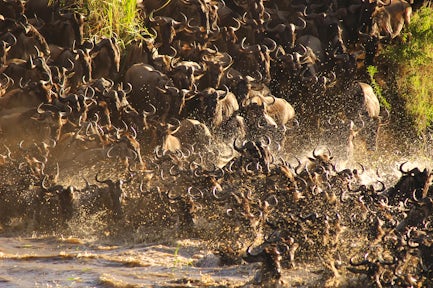
The Great Migration, a perilous journey.
Safari in the Serengeti
There are three popular regions for safari in the Serengeti: the southern plains, the central Seronera Valley, and the western corridor.
The southern plains are flat, open areas of short grassland. This is the quintessential Serengeti landscape, and what you probably picture in your head when you think of safari.
The central Seronera Valley is a network of river valleys whose rich grazing grounds attract the largest numbers of wildlife in the region. This is the most popular area to visit.
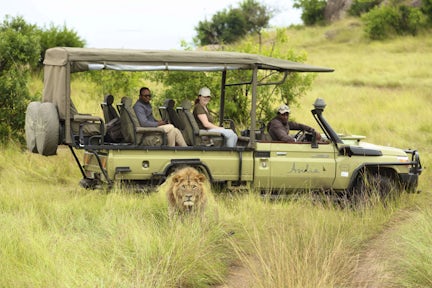
The western corridor is an area of land stretching west from Lake Victoria. It follows the path of the Grumeti river, the first of the wildebeest’s perilous crossing.
A particularly interesting area is the Serengeti hippo pool in the east of the park, where giant hippos pile on top of each other in small pools, bathing in the water.
Most safaris leave early in the morning, around 06:30 and return at midday for lunch at the camp. In the afternoon, you'll head back out and return for sundowners at the end of the day. Night drives are not possible in the Serengeti.

Hot air ballooning in the Serengeti
Getting to the Serengeti
By Air
There is an airstrip located in the park itself – the Seronera Airstrip receives flights from Dar es Salaam (with flights times from 2.5-4 hours depending on the size of plane you book), Arusha, Zanzibar, Kilimanjaro and Ruaha.
Most planes flying to the Serengeti are small bush planes, and so we recommend you keep your luggage as light and small as possible.
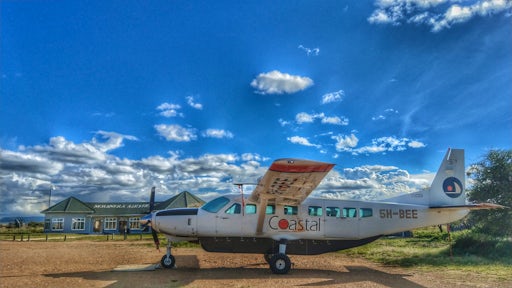
By Road
You can drive from Arusha, which takes 8 hours but is a safari ride in itself; you will pass much wildlife and beautiful scenery, along a rather bumpy road.
This trip takes you through the Ngorongoro Conservation area, so you might want to drive through here, stopping overnight and finishing in the Serengeti the next day after a three-hour drive.
You could also fly one way and drive back.
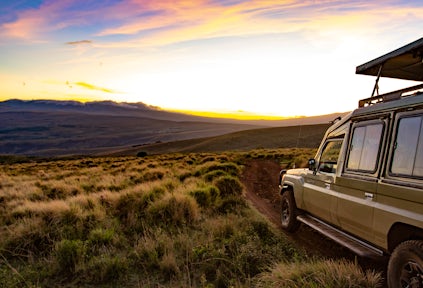
When is the best time to visit the park?
The best time to see the migration is from July to October. This is the dry season, and in June and July the herds will be facing their biggest challenge: the Mara river crossing.
If you are keen on seeing the predators in action, go in January or February, when there is a hiatus in the annual rains and the wildebeest calve.
The average temperature in the park during the year is 25-28 degrees Celsius.
Note that travelling in the peak seasons naturally comes with higher costs, and there's a certain beauty about the country during or just after the rains.
3 reasons to book with Brilliant
1. Highest-rated safari company on Trustpilot
So you can book with confidence knowing you're in safe hands.
2. A fully bespoke service and expert impartial advice
Planning a trip to East Africa is complicated. Brilliant makes it easy. Our team have spent decades in the region so we can help you find the right trip - and we don't charge a fee.
3. Exclusive access at the best rates
We have exclusive access to the best value-for-money camps and lodges at rates you won't get anywhere else.

Melissa and team ready for safari
Trips to the Serengeti
The tours below showcase just some of what is possible. Use these itineraries as starting points, or to draw inspiration. Then get in touch, and let our expert team help craft the perfect itinerary for you.
Travel with Brilliant Africa
Every year, we help hundreds of travellers explore East Africa.
Our team can help you find the trip to match your dreams, budget, and appetite for adventure.
Ready to plan your African adventure?
Listen
We'll spend some time listening to your aspirations, then discuss the kind of experience that might suit you.
Match
Next we'll discuss the options, shortlist the best trips for you and present you our impartial recommendations.
Reserve
We'll place a 24 hour hold on your preferred option - without obligation - whilst we talk through the details.
Whatever your budget, group size, length of stay, preferred activity or appetite for adventure, we can help.

